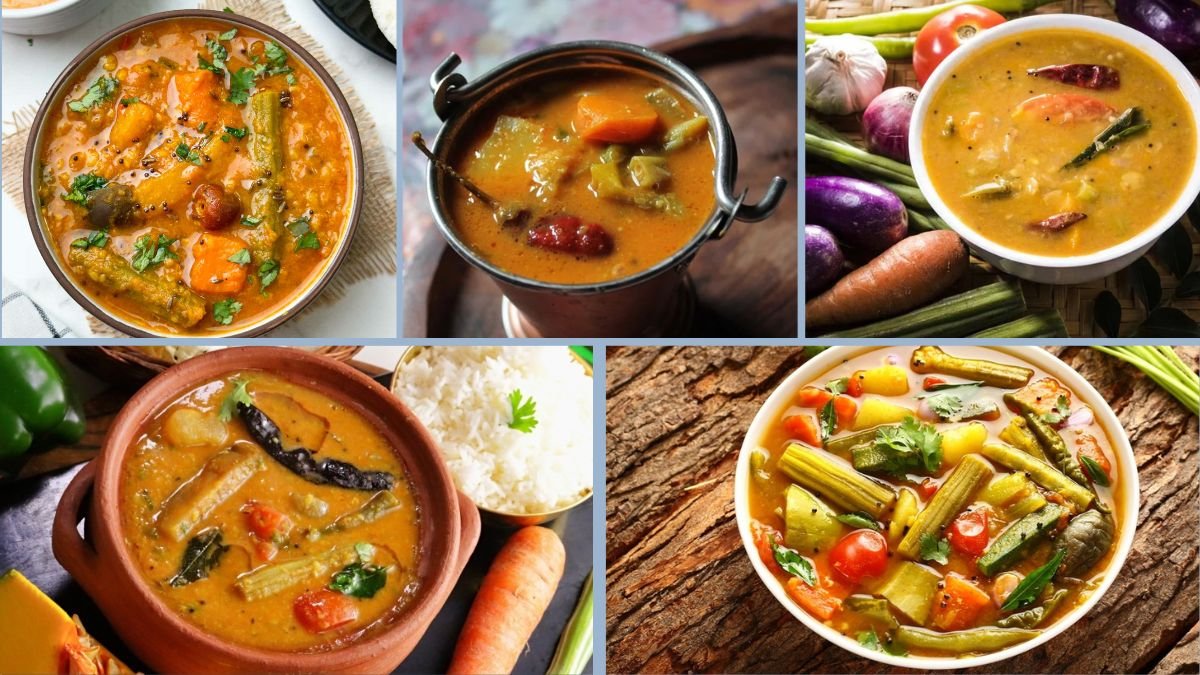Sambar is a quintessential South Indian dish loved across the country for its wholesome taste, nutritional benefits, and versatility. Traditionally made with lentils and a medley of vegetables, sambar is both comforting and nourishing. Its tangy, spicy flavor profile paired with rice or idli makes it a staple in many households.
In this article, we explore a 7-step process to prepare delicious sambar at home using seasonal vegetables, ensuring freshness, nutrition, and taste while keeping it purely vegetarian and free from any non-veg elements. Seasonal vegetables not only boost the health quotient but also bring vibrant colors and textures to your sambar bowl.
Step 1: Selecting Seasonal Vegetables and Lentils
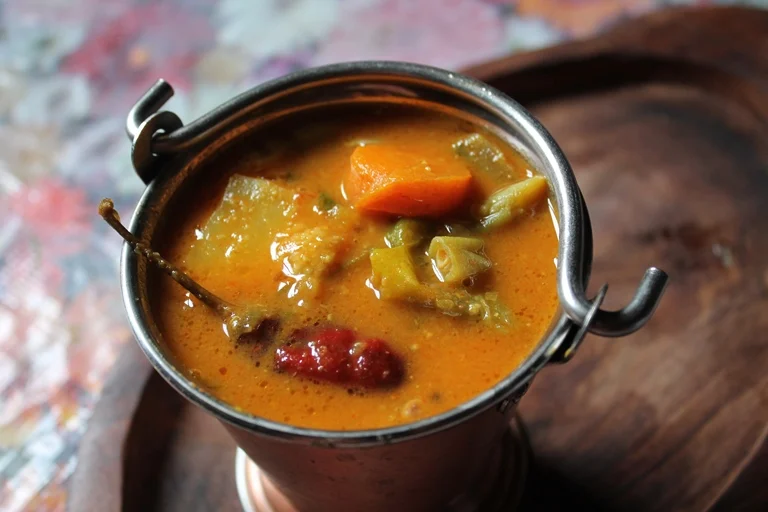
The first step towards making great sambar is choosing the right vegetables and lentils. Seasonal vegetables are fresher, tastier, and more nutritious. Common vegetables used in sambar include:
- Drumsticks (moringa pods)
- Carrots
- Pumpkin
- Bottle gourd
- Brinjal (eggplant)
- Tomatoes
- Radish
- Beans
- Pumpkin
- Okra
Choose 2 to 3 vegetables based on availability and preference for a balanced mix of flavors and textures.
For lentils, toor dal (pigeon peas) is the traditional choice. It has a pleasant taste and cooks down to a smooth, creamy consistency perfect for sambar. Other options include moong dal or masoor dal, but toor dal remains most popular.
Step 2: Preparing Lentils and Vegetables
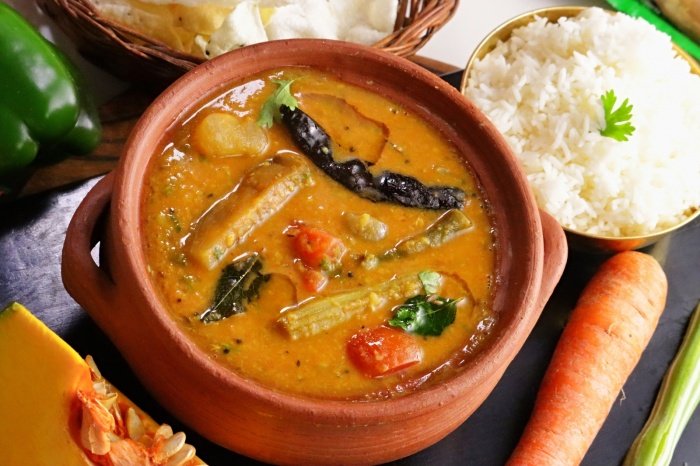
Preparing Lentils:
- Rinse 1 cup of toor dal thoroughly in running water.
- Soak for 20-30 minutes to reduce cooking time.
- Cook lentils either in a pressure cooker or a pot until soft and mushy, usually 3-4 whistles in a pressure cooker or 30-40 minutes in a pot.
- Once cooked, mash the lentils lightly for a smooth consistency.
Preparing Vegetables:
- Wash and peel vegetables if needed.
- Chop into bite-sized pieces for even cooking.
- Some vegetables like drumsticks should be cut into 2-inch pieces to retain texture.
Step 3: Making Tamarind Extract
Tamarind adds the signature tangy flavor that defines sambar.
- Take a lemon-sized ball of tamarind.
- Soak it in 1 cup of warm water for 15-20 minutes.
- Mash the tamarind in the water to extract the pulp.
- Strain the liquid through a sieve to remove fibers and seeds.
- Set aside the tamarind water.
If tamarind is unavailable, you can substitute with 2 tablespoons of tamarind paste dissolved in water or use lemon juice as a last resort for tanginess.
Step 4: Preparing the Sambar Masala
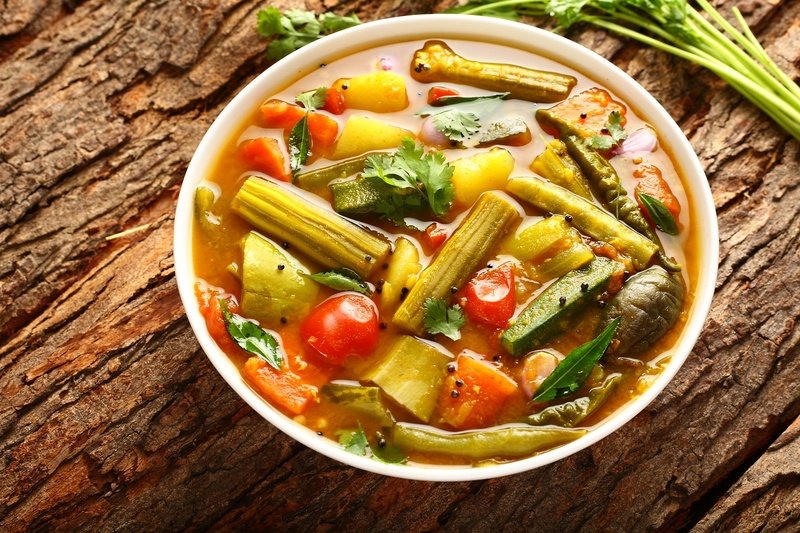
Sambar masala is a blend of spices that elevates the flavor of the dish.
You can use store-bought sambar powder or make your own by roasting and grinding:
- Coriander seeds
- Cumin seeds
- Fenugreek seeds
- Dry red chilies
- Black peppercorns
- Mustard seeds
- Asafoetida (hing)
- Dried curry leaves
Roast these ingredients on low heat until fragrant, cool them, then grind to a fine powder.
Step 5: Cooking the Vegetables
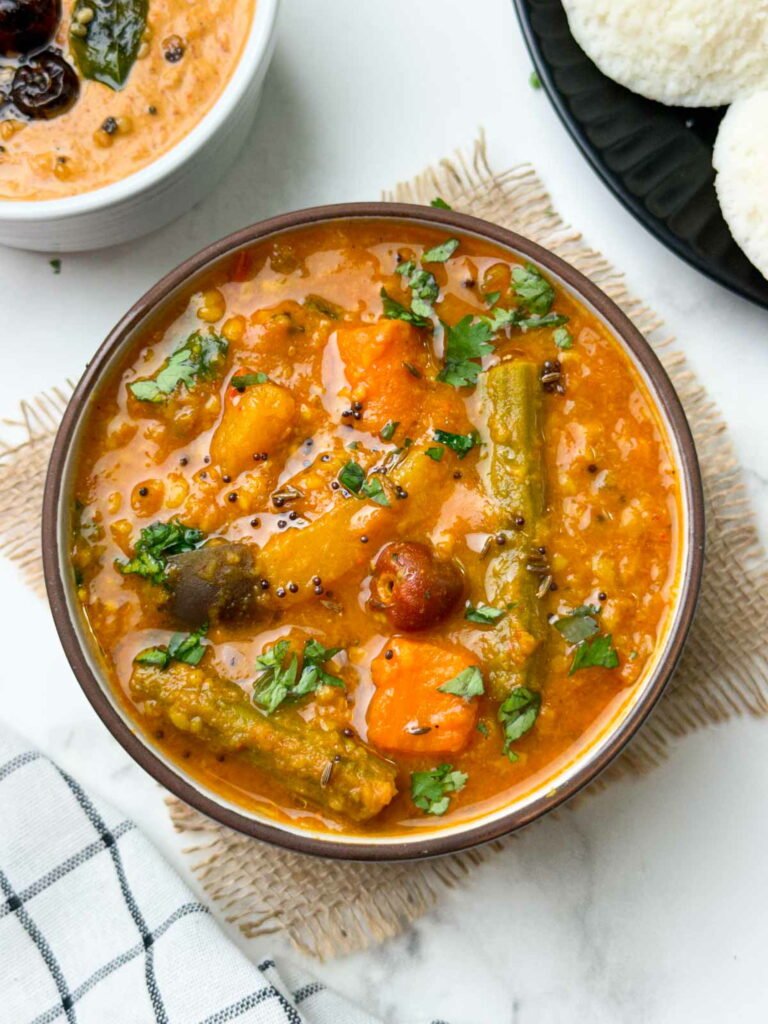
- In a large pot, heat 2 tablespoons of oil (preferably mustard or vegetable oil).
- Add mustard seeds, cumin seeds, and a pinch of asafoetida.
- When mustard seeds start to splutter, add chopped onions and sauté until translucent.
- Add chopped seasonal vegetables and sauté for 5 minutes.
- Add salt and enough water (around 2 to 3 cups) to cover vegetables.
- Cook until vegetables are tender but not mushy (about 10-15 minutes).
Step 6: Combining Lentils, Tamarind, and Spices
- Add the cooked and mashed lentils to the pot of vegetables.
- Pour the tamarind extract into the pot.
- Add 1 to 2 tablespoons of sambar masala powder.
- Stir well to combine.
- Let the sambar simmer on low heat for 10-15 minutes to let the flavors meld.
- Adjust salt and consistency by adding water if needed.
- Stir occasionally to prevent sticking.
Step 7: Tempering (Tadka) the Sambar
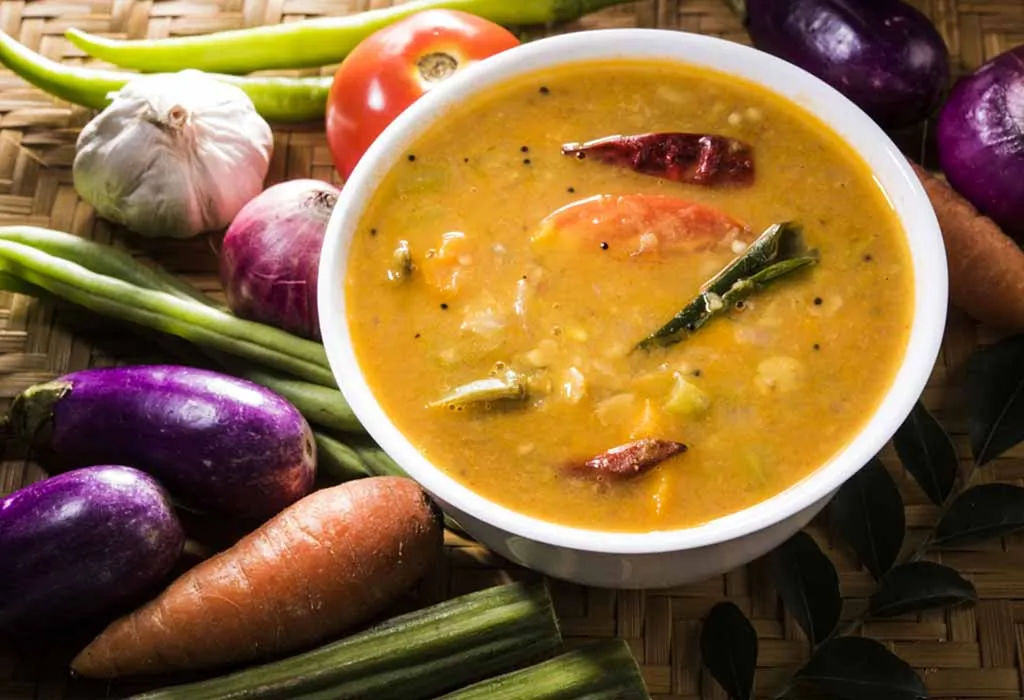
Tempering adds aroma and an additional layer of flavor.
- Heat 1 tablespoon oil or ghee in a small pan.
- Add mustard seeds and let them crackle.
- Add dried red chilies, curry leaves, and a pinch of asafoetida.
- Optionally, add crushed garlic or chopped green chili for extra flavor.
- Pour this tempering over the simmering sambar.
- Mix well and cover the pot immediately to trap the aromas.
Serving Suggestions and Nutritional Benefits
Sambar is best served hot with steamed rice, idli, dosa, or even as a side with chapati. It’s a complete, balanced meal combining protein from lentils, vitamins and fiber from vegetables, and the tangy zest of tamarind.
Nutritional highlights:
- Rich in protein: Lentils provide a good source of plant-based protein.
- Fiber-rich: Vegetables and dal aid digestion and promote gut health.
- Low in fat: Using minimal oil keeps it heart-healthy.
- Rich in antioxidants: Spices and vegetables contribute anti-inflammatory properties.
Tips for Perfect Sambar Every Time
- Use fresh, ripe tamarind or tamarind paste for authentic flavor.
- Do not overcook vegetables; they should hold shape and texture.
- Adjust sambar powder spice levels to your taste.
- Rest sambar for a few hours or overnight; flavors intensify beautifully.
- Experiment with seasonal vegetables to keep the dish fresh and interesting.
- Avoid canned or frozen vegetables for best texture and taste.
Conclusion
Making sambar with seasonal vegetables at home is a rewarding experience that combines nutrition, flavor, and tradition. By following these 7 easy steps, anyone can create a delicious, wholesome sambar that’s perfect for any meal.
This dish not only offers comfort but also reflects the wisdom of using seasonal produce, sustainable cooking practices, and the magic of simple spices. Enjoy this vibrant South Indian classic with family and friends, knowing it’s packed with goodness and made from scratch, free from any non-vegetarian elements.
